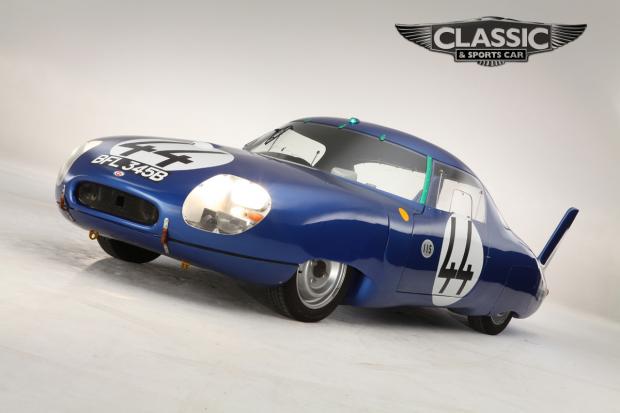
Charles Deutch's Le Mans streamliner had a drag coefficient of just 0.12, says Richard Heseltine, and it could nudge 140mph from only 848cc of Panhard saloon flat-twin.
You can’t help but stare in whimpering incomprehension, too mesmerised to even blink. With an air of moustache-twirling villainy, our hero flexes the throttle pedal, firing another barrage of angry air-cooled buckshot out of the lone exhaust pipe. It’s truly, epically loud, to the point where you start giggling uncontrollably, the alternative being to merely black out. This wellspring of weirdness simply blows the mind and assaults your ears like no other car, each staccato pop and bang being slightly more painful than the last. There’s deafening and then there’s this CD-Panhard Le Mans veteran.
With the benefit of hindsight, starting such a car in an enclosed space wasn’t that bright an idea, but it had been a long day and it would have been rude not to. A point of view no doubt lost on those inhabiting the four floors of office space above the studio – and the patrons of the pub garden opposite for that matter.
But we all like to have preconceptions affirmed and this gloriously left-field machine is everything that you expect it to be and more. Built to contest the 1964 running of the round-the-clock classic, its wind-cleaving outline expressly established with the Hunaudières straight in mind, this car is just so, well, French.

But there’s more to this fascinating curio than mere novelty status alone. You could argue that the CD-Panhard is a forgotten pioneer, the use of computational calculations involving everything from the effect of crosswinds to suspension flexibility. It culminated in a radical streamliner that pushed the boundaries of what was possible and what was permissible. This was the antithesis of the ‘chalk marks on the floor’ approach to racing-car design, and it genuinely functioned as predicted. Consider this: such was its designer’s mastery of airflow that the car has a drag coefficient of just 0.12. By way of comparison, a Ferrari 458’s cd is 0.32. The LM64 also managed 137.5mph on fewer than 80bhp. And that was 46 years ago. On paper, it’s genuinely remarkable. Off paper, even more so. The depth of thought invested here is toweringly impressive even now.







